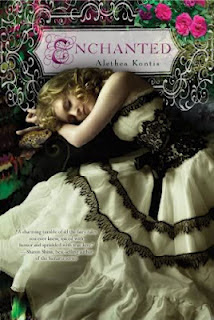The Reviews:
Above World, by Jenn Reese, at Teach Mentor Texts
Artemis Fowl and the Last Guardian, by Eoin Colfer, at Fantastic Reads
Castle in the Air, by Diana Wynne Jones, at Bunbury in the Stacks
Claws, by Mike and Rachel Grinit, at Ms. Yingling Reads
The Clockwork Girl, by Sean O’Reilly and Kevin Hanna, at Good Comics for Kids
The Coming of the Dragon, by Rebecca Barnhouse, at Sharon the Librarian
The Crowfield Curse, by Pat Walsh, at Bibliophile Support Group
The Doll People, by Ann Martin and Laura Godwin, at Julie DeGuia
The Drowned Vault (Ashtown Burials book 2) by N.D. Wilson, at Karissa's Reading Review
The False Prince, by Jennifer Nielsen, at Reads for Keeps and One Librarian's Book Reviews
Gods and Warriors, by Michelle Paver, at Becky's Book Reviews
Ghosts of the Titanic, by Julie Lawson, at Charlotte's Library
GRYMM, by Keith Austin, at The Book Zone
Heirs of Prophecy, by Michael Rothman, at The O.W.L.
The Kindling, by Braden Bell, at Emily's Reading Room
Liesl and Po, by Lauren Oliver, at how I see it
The Magic Meadow, by Alexander Key, at Library Chicken
The One and Only Ivan, by Katherine Applegate
Ordinary Magic, by Kaitlen Rubino-Bradway, at Marie Loves Books
The Peculiar, by Stefan Bachmann, at Intergalactic Academy
Radiance, by Alyson Noel, at The Book Cellar
The Second Spy (Books of Elsewhere 3) by Jacqueline West, at Book Nut
The Sixty-eight Rooms, by at time travel times two
A Tale of Time City, by Diana Wynne Jones, at Random Musings of a Bibliophile
The Templeton Twins Have an Idea, by Jeremy Holmes, at Ms. Yingling Reads
The Terrible Thing that Happened to Barnaby Brocket, by John Boyne, at The Book Zone
Time Snatchers, by Richard Unger, at Book Nut
Twighlight Robbery (Fly Trap in the US), by Frances Hardinge, at The Book Smugglers
Verdigris Deep (Well Wished in the US), by Frances Hardinge, at Read in a Single Sitting
The Wishing Spell, by Chris Colfer, at Wandering Librarins
The Wolves of Willougby Chase, by Joan Aiken, at The Enchanted Inkpot (maybe not a fantasy book, exactly, but the series does end up going in that direction...)
Authors and Interviews:
Jordan Hamessley London (mg and chapter book sci fi, fantasy, and horror editor at Grosset and Dunlap) on "Working with the Design Team", with specific reference to Adam-Troy Castro’s Gustav Gloom and the People Taker, at Pub(lishing) Crawl.
Lindsey Leavitt (Princess for Hire and its sequels) at Cracking the Cover
Joanne Levy (Small Medium at Large) at The Enchanted Inkpot
Michael Rothman (Heirs of Prophecy) at The O.W.L. and A Book and a Latte
Lorin Barber (The Secret Life of Copernicus H. Stringfellow) at A Thousand Wrongs
Other Good Stuff:
Just because I don't, you know, have enough to read, I've started at the beginning of the Discworld Series and plan to read straight through (I'd only read a couple (after that, I'll read Game of Thrones etc.). But enough about me. True fans of Discworld might want to go to the St. Barbe Museum & Art Gallery in Lymington, Hampshire, next month to see "Discworld and Beyond: a Retrospective Exhibition."




























